At this point we have taken a look at over 900 board game here on Geeky Hobbies. Having played so many different games, many tend to blend together as they fail to do anything special. Generally I can get a pretty good idea of how good a game will be just by looking at it. Every so often though there is a game that genuinely surprises me. Dominique at first glance looked like just another generic tile laying game that looked kind of boring. I honestly only picked it up because it was really cheap. I like to give every game a legit chance though as there are occasional surprises. Dominique is not a fantastic game, but it genuinely surprised me with some interesting ideas for a tile laying game.
How to Play Dominique
Setup
- The first player can be determined in one of two ways. You can flip a coin to determine the winner. Otherwise the players could take turns drawing tiles. The first player to draw a tile featuring three dots of the same color will be the first player. Play will then pass clockwise/left.
- Each player will take a tile rack.
- Turn all of the tiles face down on the table. Each player will take three tiles and place them on their tile rack so only they can see the colored dots.
Playing the Game
The first player will begin the game by playing one of their tiles to the table. After playing their tile they will draw a new tile to add to their rack.
Moving clockwise the players will take turns adding one of their tiles to the tiles already played to the table. Players can either place their tile to the left or right of the tiles already placed. All tiles must be placed where the longest side of the tiles are next to one another. After playing their tile they will draw a new one to add to their tile rack. This continues until eleven tiles have been added to the row.
Once the eleventh tile is played the next player will get to start the next row.

The eleventh tile was played in the first row completing it. The next tile will start the second row.
They will place the next tile in one of the four corners of the first row of tiles. Each subsequent player will then place a tile next to the last tile played.
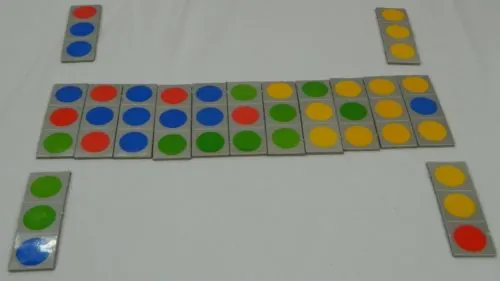
To start the second row, the next player can place their tile in one of the four corners shown above.
When the second row of eleven tiles is completed, the third row will be started in the same way as the second row. The third row will also consist of eleven tiles before the fourth and final row is started.
Scoring
The objective of Dominique is to get three or more dots in a row of the same color. This can be done horizontally, vertically, or diagonally.
When a player connects three or more dots of the same color, they will score one point for each dot in the group.
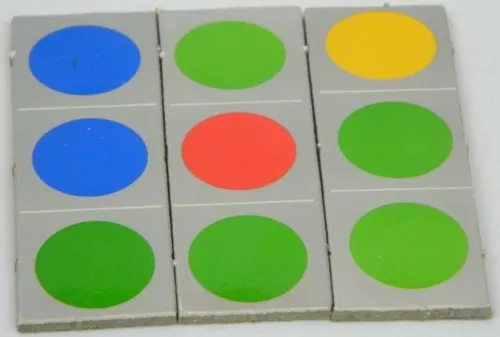
The tile on the left was just played. As there are three green dots connected along the bottom, the player who played the tile will score three points.
If the dots are connected diagonally they will be worth two points each. When a player makes two or more groups of three with the placement of their tile, they will score points for each group that their recently played tile is part of.
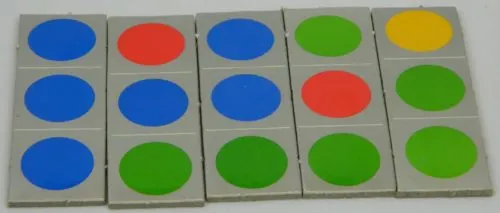
The tile on the far left was placed last. There are three blue dots connected horizontally in the middle which will score three points. There are also three blue dots connected diagonally which will score six points.
End of Game
The game ends once all 44 tiles have been played. The player who scores the most points wins the game.
My Thoughts on Dominique
Heading into playing Dominique I can’t say that I had high expectations for the game. Between the fact that the game is over 40 years old at this point and it looked like just another generic tile laying game, I thought the game was going to be pretty boring and derivative. While Dominique is not a fantastic game, I was genuinely surprised by it.
In a lot of ways Dominique plays like a lot of other tile laying games. The gameplay is straight to the point. Players take turns placing tiles next to one another with the objective of trying to connect dots of the same color. In order to score points you need to connect three or more dots of the same color. The more dots you connect together, the more points that you will end up scoring. Getting dots connected diagonally is even better as they score twice as many points. The player who scores the most points once all of the tiles have been played, wins the game.
After reading that you are probably thinking that Dominique sounds like a pretty simple game. It should as that is exactly what the game is. Players basically take turns placing tiles trying to connect dots. The game has a recommended age of 7+ which seems about right. I think you could teach the game within just a couple minutes to new players. Outside of really young children, I don’t see anyone having trouble playing it. Some players are going to be better at the strategy than others, but I see the game being approachable enough that anyone can enjoy playing it.
The game’s simplicity translates to it playing pretty quickly. The whole game consists of playing 44 tiles. While you need to put some planning and thought into what tiles you end up playing, turns shouldn’t take very long due to a couple reasons. First players will only be able to choose from one of three tiles. Second after the first row is completed, you don’t have much of a choice in where you place your tiles. I could see some players wanting to analyze every option, but even in that case a player couldn’t take too long on their turn. Thus for an abstract strategy game, Dominique does a pretty good job limiting analysis paralysis. I would guess that most people could finish a game within 20-30 minutes.
Speaking of strategy, I thought Dominique had more than initial appearances might make it seem. The game is far from a strategic masterpiece as your options are usually pretty obvious. When you can get points, you should usually take them unless it opens up the next player to even more points. Thus most of the gameplay comes from analyzing your current tiles to find which one will score you the most points. You can’t just randomly place tiles and hope to have a good chance of winning the game. Planning ahead plays a pretty crucial role in the game. You won’t know exactly what the other players will end up doing, but you should still look at the upcoming tiles to try and plan what tiles to play on future turns.
I think the most satisfying part of Dominique is when you are able to place a tile that creates a large chain of dots. Creating a large diagonal set in particular can be the difference between winning and losing. Diagonals are key to your success in the game as they score twice as many points. It is usually better to choose a shorter diagonal over a straight path as it will score you more points. While the diagonals seem a little overpowered, they are also harder to spot. While you usually are better off trying to score as many points as possible, it is occasionally worth making a defensive move in order to prevent the next player from scoring a lot of points.
Probably the biggest problem that I had with Dominique is that at times it doesn’t feel like you have many choices for what you can do on your turn. For the first row players can play on either side of the tiles that have already been played. After the first row though you don’t get a choice of where you will get to play. The start player for each row will get to pick a corner to play to, and then everyone will have to play off that corner. Thus all of spaces that you will play to in a row will be determined after the first tile in the row is played. This could be really beneficial to some players as they get the best places to play tiles. While others have to keep playing to worse spaces. I will admit that this does help players with their ability to plan ahead as you can start thinking several turns in advance without knowing exactly what the other players are going to do.
The reason that I didn’t like this mechanic is that it adds quite a bit of luck to the game. While there is more strategy to the game than I initially expected, luck still plays a big role in the game. The positions where you get to place tiles will have a big impact on how well you will do. What tiles you grab are important as well. By themselves all of the tiles are pretty equal as none are inherently better than others. When you draw a tile is what matters though as you want to get tiles that feature the color prevalent in the area where tiles are currently being placed. You could have a good strategy, but if you don’t get to place tiles in the best positions or your tiles don’t work well with the nearby tiles, there is nothing that you can do to improve your chances in the game.
While I haven’t tried it, I am curious if a variant rule could have fixed some of these issues. The variant rule that I would suggest has the start player for a row choosing one of the corners like normal. Instead of having to play next to this tile though, I think players should be allowed to play tiles to the other end of the row at the same time. I think this would have added a decent amount of strategy to the game as well as prevented players from being stuck in situations where they can’t score points. I haven’t tested this as it might break the game even more, but I think it is something that I will try the next time I play Dominique.
Before wrapping up I wanted to quickly talk about Dominique’s components. This is probably one of the game’s greatest weaknesses in my opinion. As there have been a number of different versions of Dominique and 3 or More (the other name that the game goes by), I can only comment on the 1980 version. Basically the game just comes with 44 cardboard tiles and four cardboard tile racks. The racks are pretty cheap. The tiles are a decent thickness, but the artwork is really bland. The components do their job, but don’t do much else for the game.
Should You Buy Dominique?
I began this review by saying that I didn’t have high expectations for Dominique. While the game is far from perfect, I was genuinely a little surprised by it. In a lot of ways it plays like your typical tile laying game as players take turns placing tiles trying to connect dots of the same color. The game’s simplicity leads to a game that is really easy to play that also plays pretty quickly. The best action for each player is usually pretty obvious, but there is a decent amount of strategy to the game as well. To do well in the game you really need to plan ahead. One thing that I didn’t love about the game though was after the first row players don’t get much choice of where they get to place tiles. This leads the game to rely on quite a bit of luck. The components aren’t great either.
If you don’t really care for tile laying games or you aren’t interested in the game’s premise, I don’t see Dominique being for you. Fans of tile laying games though that are at least a little intrigued by the premise should consider picking up Dominique if they can get a good deal on it.
Buy Dominique online: eBay. Any purchases made through these links (including other products) help keep Geeky Hobbies running. Thank you for your support.

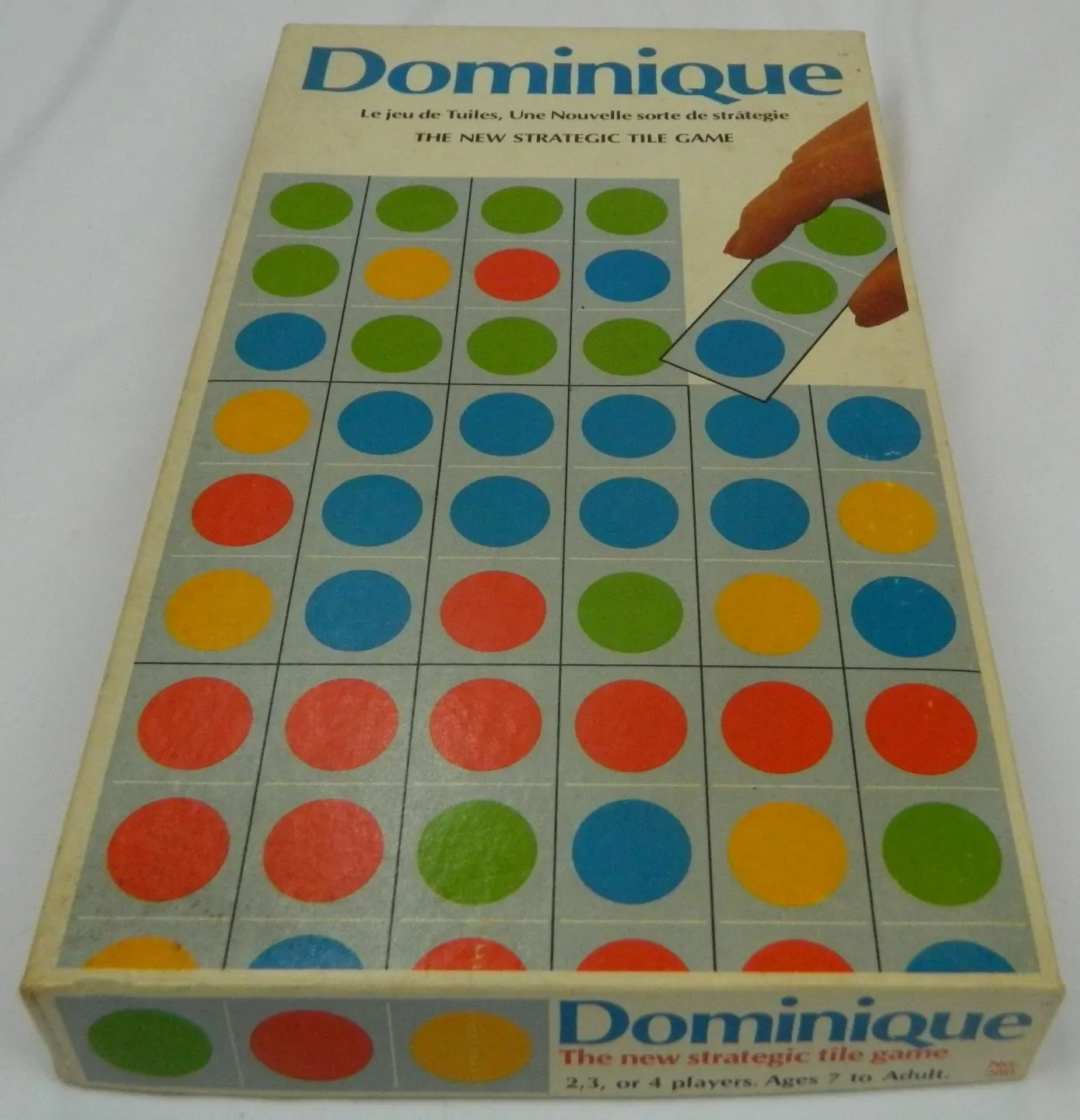
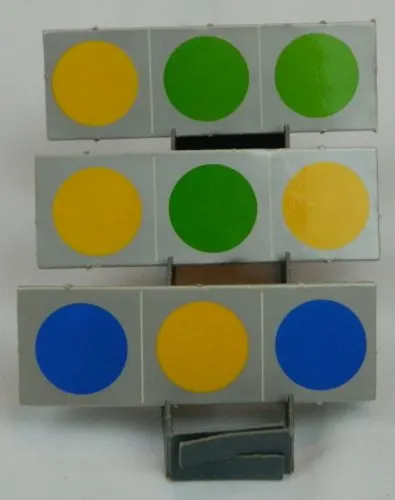
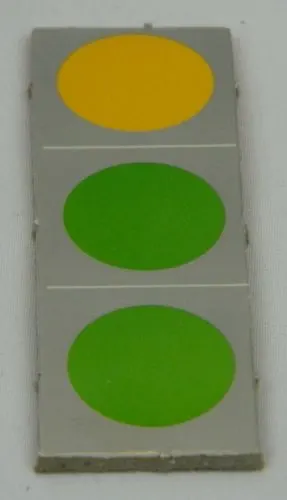
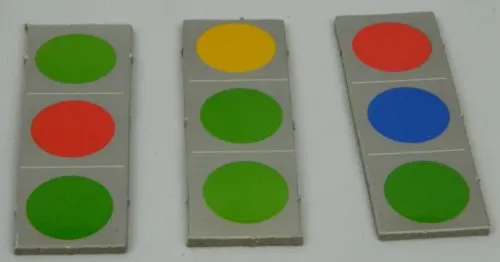
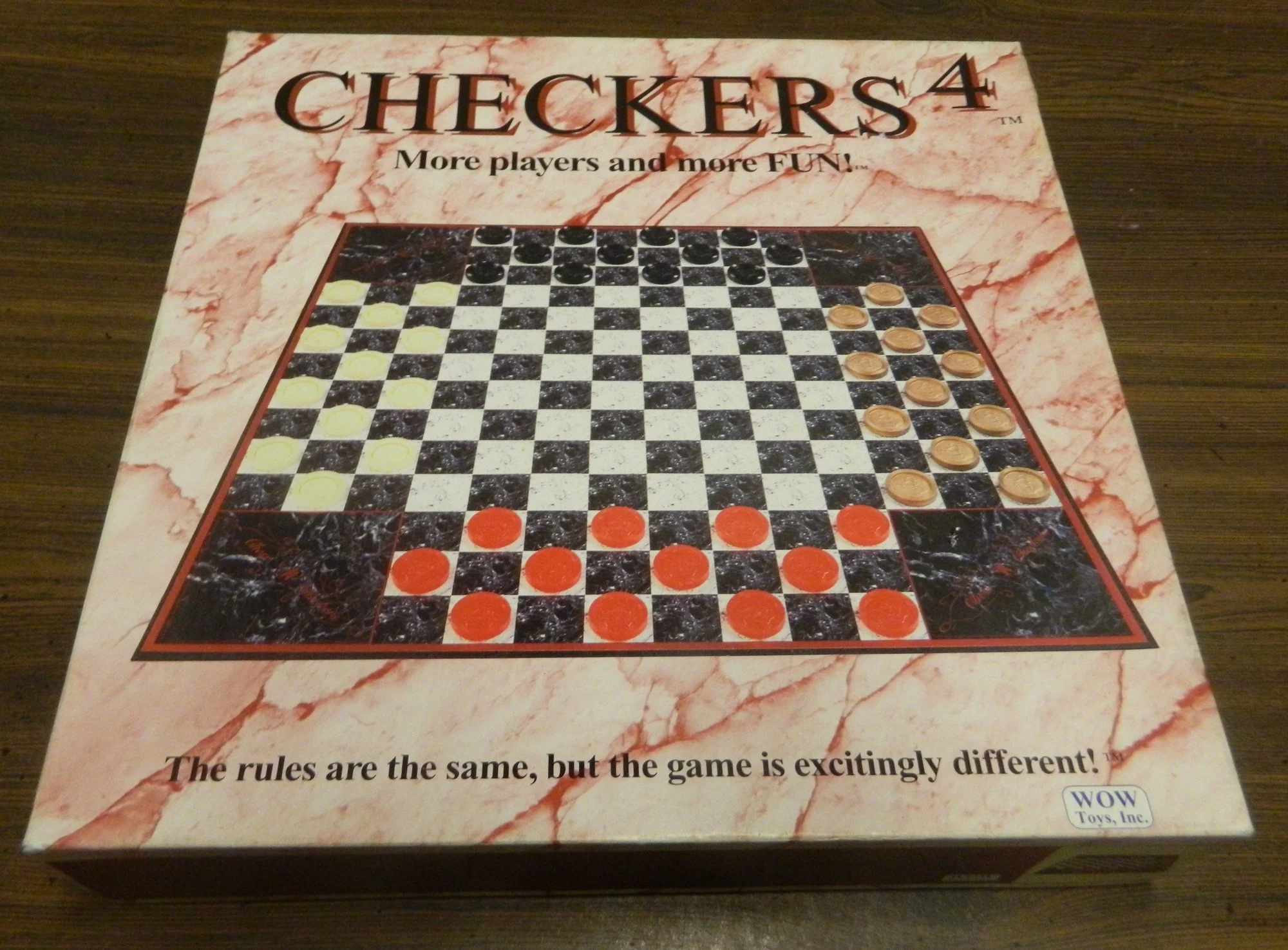
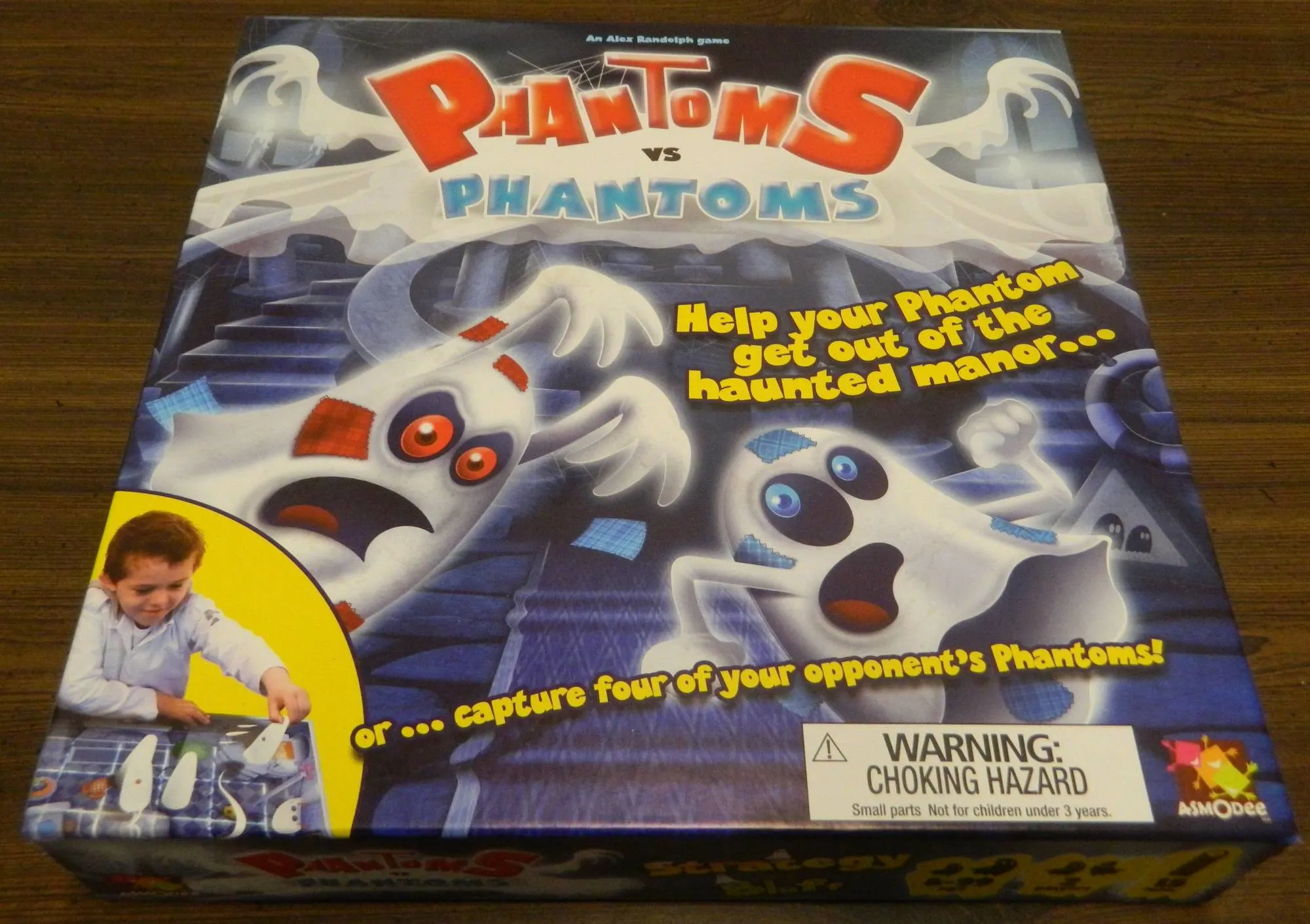
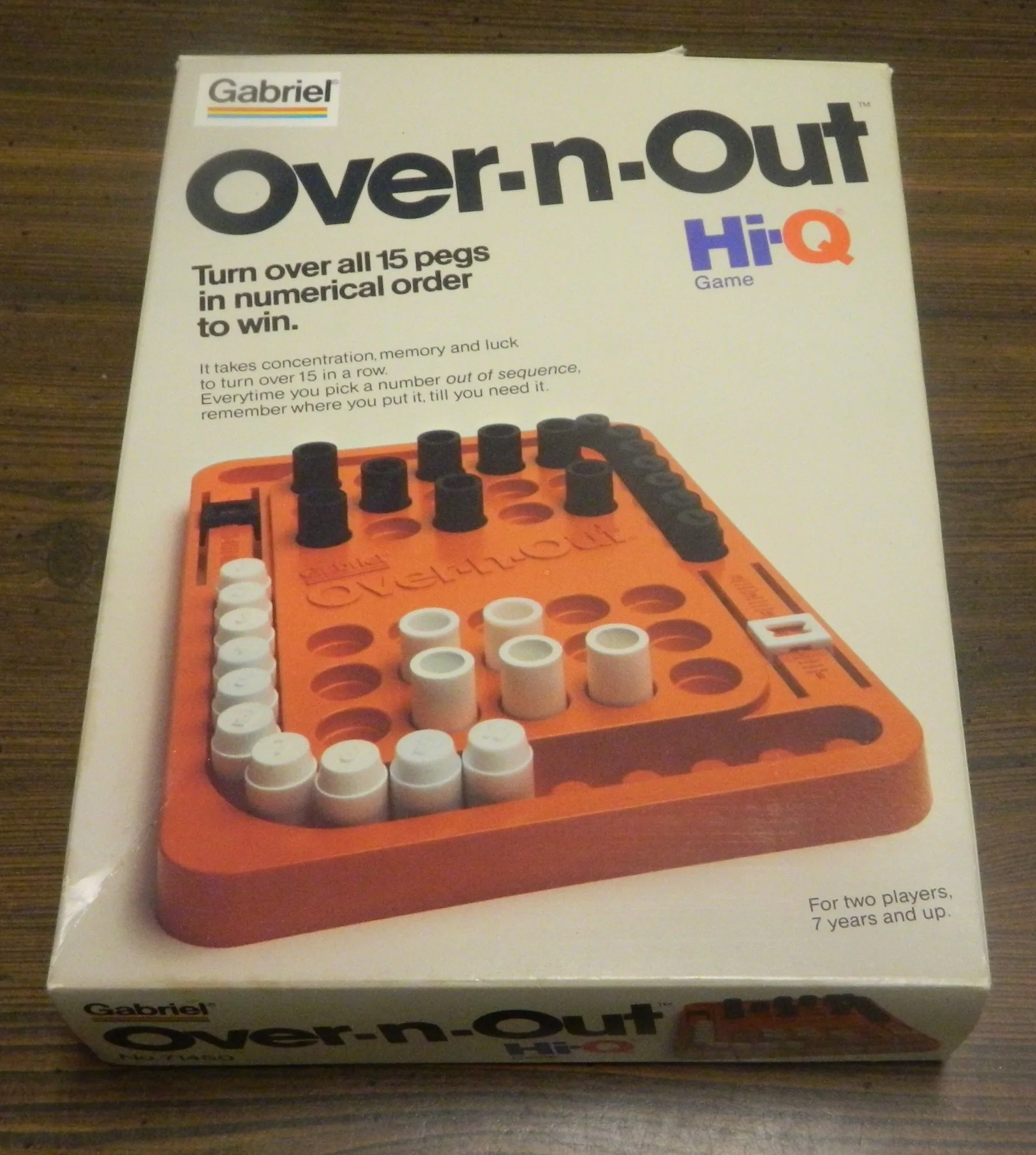
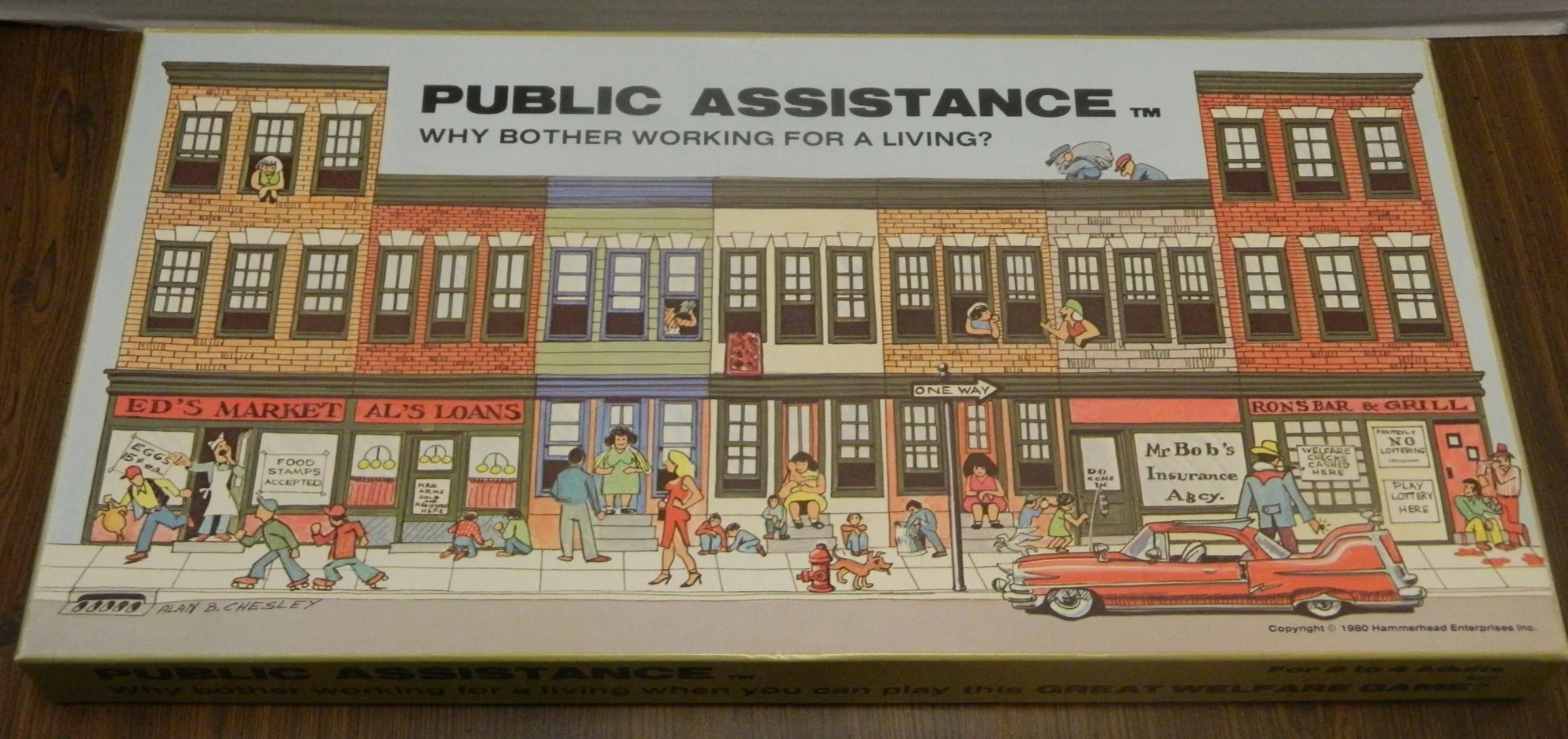

Ty
Tuesday 12th of July 2022
Any idea by chance as to where to look for either game version? eBay seems to be a bust unfortunately. Any recommendations would be welcome.
Ty
Friday 21st of October 2022
@Eric Mortensen, thanks. I've got a saved search going for eBay, apparently Etsy too as a copy was just sold there not too long ago. Looking patiently :)
Thanks.
Eric Mortensen
Wednesday 13th of July 2022
Unfortunately since the game hasn't been released since the 1980s, you likely will only be able to find it on sites such as eBay. As the game probably didn't have a bunch of copies made, it may take some time for a copy to become available on eBay.
I am sorry I couldn't be of much help.